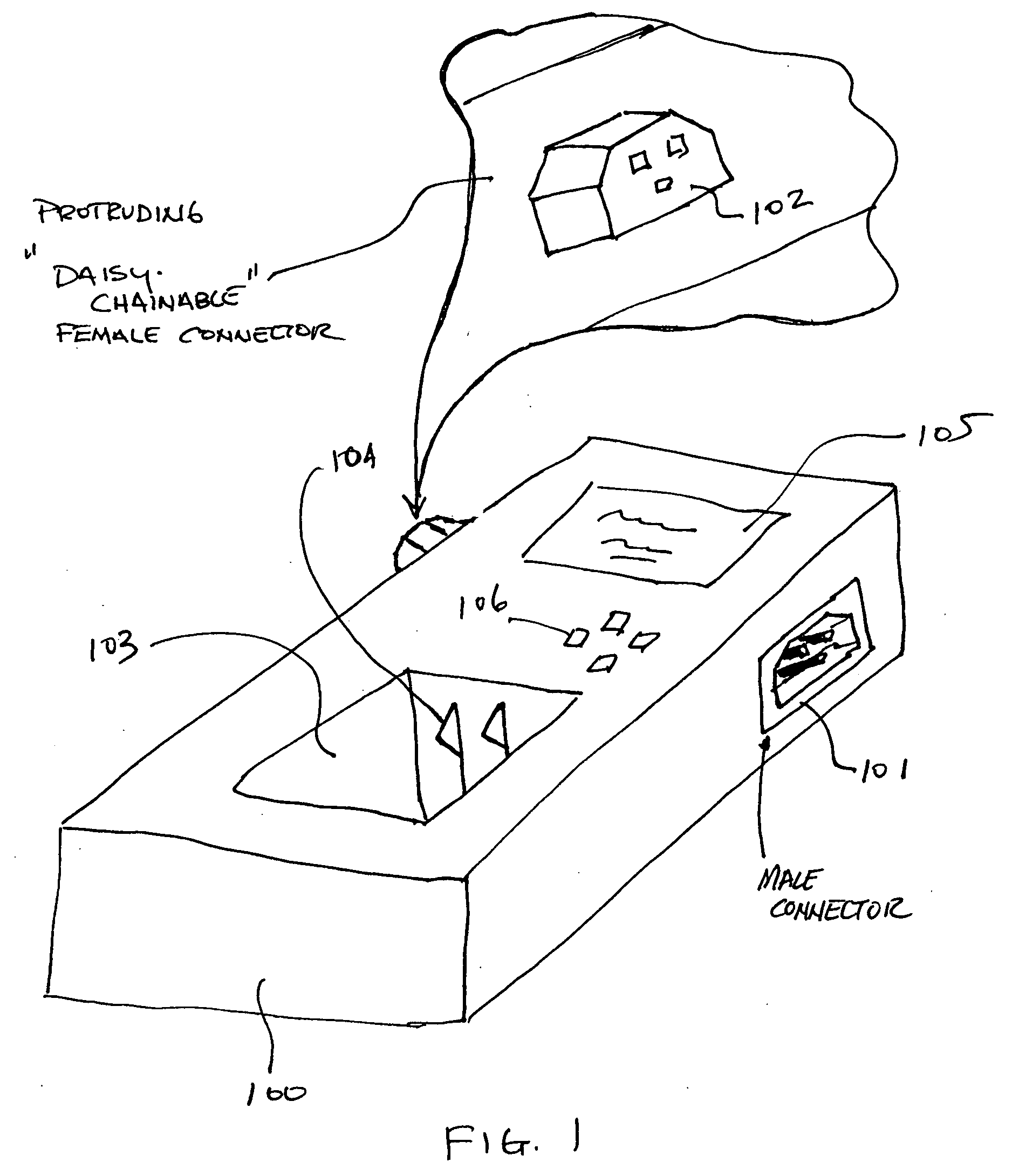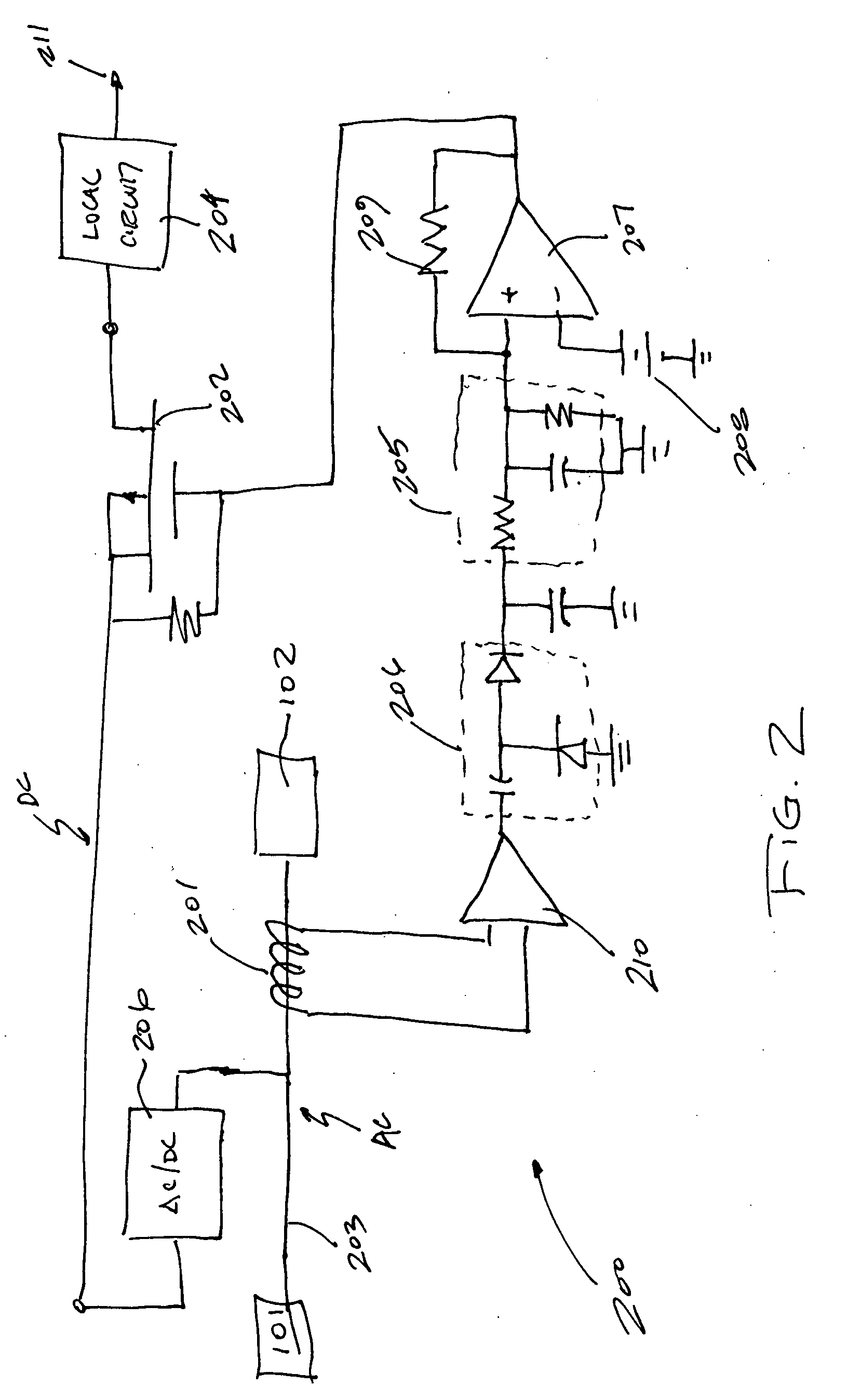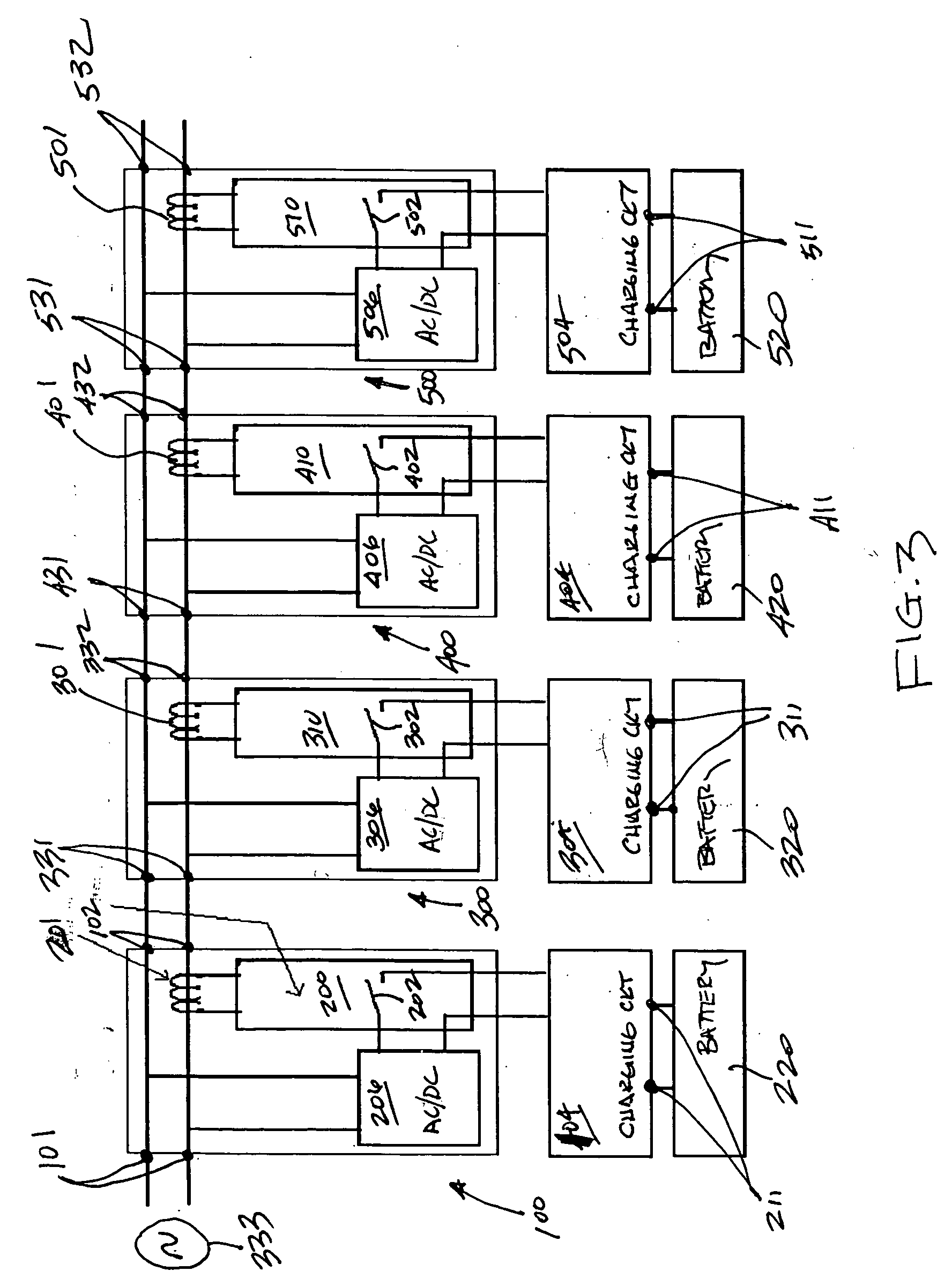Electronic device with main current limit circuit
a technology of current limit circuit and electronic device, which is applied in the direction of mobile unit charging station, transportation and packaging, and battery arrangement for several simultaneous batteries, etc., can solve the problems of rat's nest of wires, unsightly and difficult to conceal, and criss-crossing each other may resemble a tangled mess,
- Summary
- Abstract
- Description
- Claims
- Application Information
AI Technical Summary
Benefits of technology
Problems solved by technology
Method used
Image
Examples
Embodiment Construction
[0013] A preferred embodiment of the invention is now described in detail. Referring to the drawings, like numbers indicate like parts throughout the views. As used in the description herein and throughout the claims, the following terms take the meanings explicitly associated herein, unless the context clearly dictates otherwise: the meaning of “a,”“an,” and “the” includes plural reference, the meaning of “in” includes “in” and “on.”
[0014] This invention includes an electronic device, like a desktop battery charger for example, that may be coupled together serially with other similar devices. For example, one charger may be coupled to another identical charger, and so on, to form a multi-unit charger from a plurality of single unit chargers. This serial coupling, sometimes referred to as a “daisy chain configuration”, allows multiple devices, like chargers, to be coupled directly together in series without the need for unsightly cables.
[0015] In one preferred embodiment of the inv...
PUM
 Login to View More
Login to View More Abstract
Description
Claims
Application Information
 Login to View More
Login to View More - R&D
- Intellectual Property
- Life Sciences
- Materials
- Tech Scout
- Unparalleled Data Quality
- Higher Quality Content
- 60% Fewer Hallucinations
Browse by: Latest US Patents, China's latest patents, Technical Efficacy Thesaurus, Application Domain, Technology Topic, Popular Technical Reports.
© 2025 PatSnap. All rights reserved.Legal|Privacy policy|Modern Slavery Act Transparency Statement|Sitemap|About US| Contact US: help@patsnap.com



